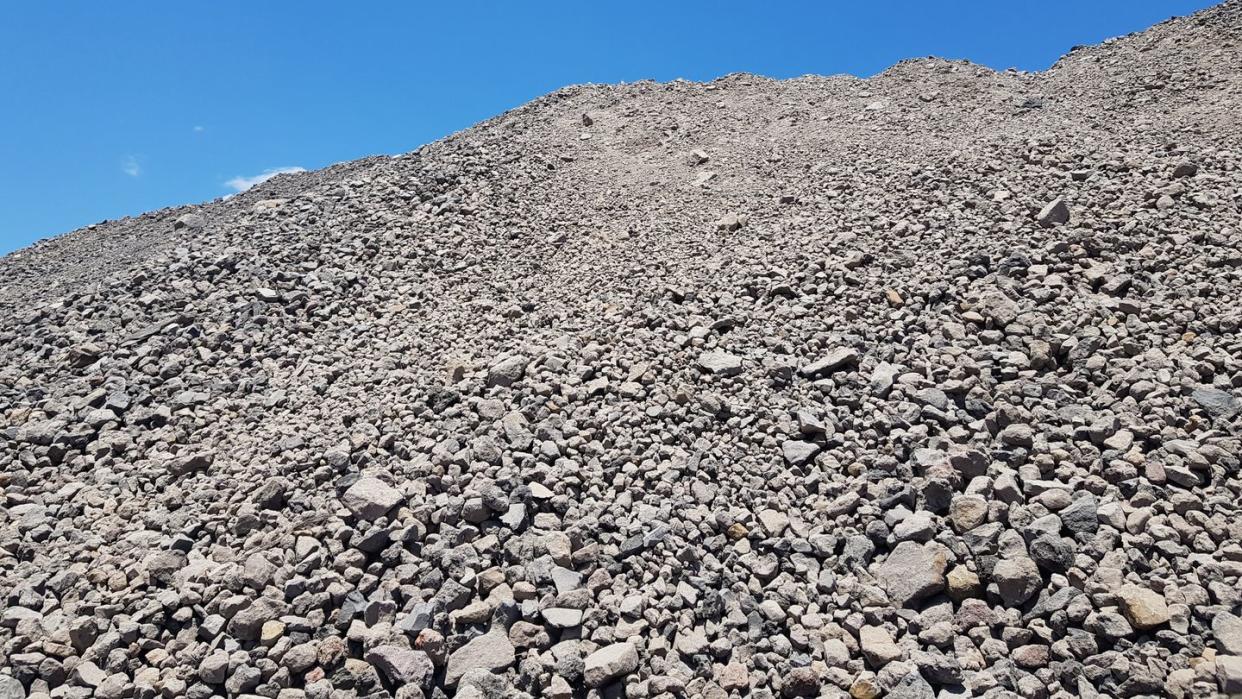A New Use for Old Concrete Could Revolutionize Carbon Capture

"Hearst Magazines and Yahoo may earn commission or revenue on some items through these links."
Rock weathering is a natural process where minerals in the soil can capture carbon and sequester it as calcium carbonate in the oceans, but the process is an incredibly slow one.
An Irish startup hopes to speed up the process by purposefully covering agricultural fields with the 1 millimeter-sized bits of waste concrete.
So far, this counterintuitive technique has shown increased bicarbonate formation, while also improving soil conditions.
When the word “concrete” and “field” are used in the same sentence, it’s likely the U.S. is building yet another parking lot. But a new technique of spreading waste concrete across agriculture fields could actually be a double dose of good news. That’s because, according to Ireland-based startup Silicate, this counter-intuitive approach can actually help recapture carbon while increasing crop yields. And the best part? This produces no harmful effects (or parking lots).
While trees get a lot of attention when it comes to removing carbon dioxide from the atmosphere (and for good reason), the Earth has other processes that remove this greenhouse gas from the atmosphere. One of those processes is called rock weathering, which occurs when rocks that are worn away by rain release elements like calcium and magnetism. Eventually, these elements react with the CO2 in the atmosphere to create new rocks like calcium carbonate and limestone, sequestering CO2 in the process.
Of course, all of Earth’s CO2 management is being quickly outpaced by human emissions, so scientists and startups are looking for ways to speed up, or “enhance,” this natural process. In November of last year, Silicate did a trial run of its new technology on a 100-acre farm south of Chicago with hundreds of tons of fine dust from ready-mix concrete in the hopes of removing roughly 220 tons of CO2 from the air—about the equivalent of CO2 produced by 50 cars in a year, according The Chicago Tribune—and capturing it in the soil.
The science is surprisingly simple. Typical concrete is made by heating calcium carbonate (limestone) to form calcium oxide (lime), and once mixed with an aggregate, it becomes concrete. Once the lime reacts with the CO2 in the atmosphere, bicarbonate ions will get trapped in the soil and eventually washed into the ocean, where it will remain for roughly 80,000 years and someday become calcium carbonate again.
With solid concrete, this process is entirely too slow for how quickly the world is warming, but by crushing the concrete into 1 millimeter-sized bits, Silicate hopes to vastly speed up the process. And luckily, there’s no shortage of waste concrete in the world.
While the company has yet to quantify exactly how much carbon is being removed, New Scientist reports that fields treated with Silicate’s concrete dust contained higher bicarbonate levels than those without. An additional study analyzed oats growing in a test field in Ireland and found that, while the oats in the two fields were the same, the concrete-treated field content 35 percent more seed mass. That’s because in addition to capturing carbon, the company also claims that the concrete is a pH amendment, meaning it can improve soil health.
While rock weathering could have carbon capture-benefits beyond what even trees can do—after all, trees release their stored carbon when they die—there’s still a lot that scientists don’t know about the effects of this technique downstream.
“Does it all eventually make its way into the oceans, which we hope? Or do we lose some of the CO2 back into the air during transport, in rivers and streams?” Frank McDermott, aprofessor in the Department of Earth Sciences at University College Dublin, pondered in The Chicago Tribune. “I think all of us, all the companies involved and the researchers, are pretty much at the stage of focusing on the initial part, and most of us haven’t had a chance to look at more downstream stuff.”
Even combined with all other natural forms of carbon sequestration, enhanced rock weathering will never be enough to cover humanity’s CO2 budget. So, while Silicate’s process could help fight climate change—while also putting mountains of waste concrete to good use—the only true cure for what ails the planet is the elimination of the globe-warming CO2 emissions in the first place.
You Might Also Like
